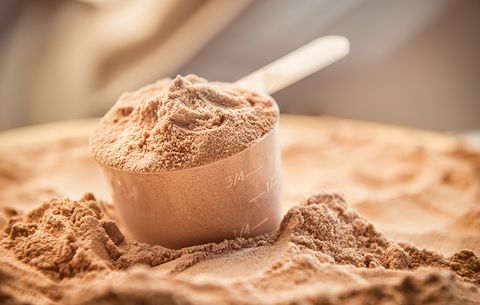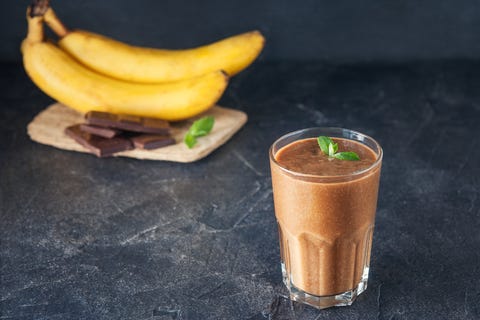2 Meal Replacement Shakes a Day Diet Results
Back in the '90s, you probably saw ads in popular fitness mags for various meal replacement shakes, which were mainly marketed as muscle-builders. The ads promised immediate gains: all you'd have to do is rip open a packet of powder, blend it up with milk or water to make a smoothie, and, like magic, *instant* muscles.
Since those early days, the market for meal replacement products has come a long way. Now, you frequently see meal replacement shakes and smoothies popping up on your Instagram feed, with various brands touting their origins as non-GMO products foraged from the mountains of Peru.
Of course, it goes without saying that meal replacement shakes won't give you instant muscles, but they can serve as a quality nutrition source, particularly when there isn't a better, more convenient meal option available. Still, the question remains: are they actually healthy for you?
This content is imported from Giphy. You may be able to find the same content in another format, or you may be able to find more information, at their web site.
First off, it's important to clarify the difference between a meal replacement shake and a protein shake. Unlike protein shakes, meal replacement shakes tend to offer more fiber, carbohydrates, and calories per serving; they're also usually fortified with vitamins, minerals and sometimes other herbs.
It's also important to note that no meal replacement shake can sufficiently replace, well, an actual meal. "Meal replacements should always be thought of as the next best thing to an actual meal," says Brett Klika, CSCS, co-founder of the youth fitness company SPIDERfit Kids. "I remind my clients real, nutrient-dense food should always be the first option."
Meal replacement shakes also likely won't help you lose any weight: if you pick up a smoothie or shake at a store, it can pack some serious hidden calories and sugar. A vanilla-flavored 8-oz. bottle of Ensure Plus, for instance, contains 20 grams of sugar, or slightly more than half of the American Heart Association (AHA) guidelines for how much sugar men should consume a day (36 grams).

Getty Images
On the flip side, if you make a meal replacement shake at home, it can fit nicely into your daily routine — provided you choose the right ingredients.
Because protein is incredibly satiating, starting out with a high-quality protein base is key. You should also consider using not just one protein source, but a few: according to a 2013 study, a protein blend (a combination of soy, whey and casein) may have a longer-lasting effect post-exercise when it comes to elevating muscle protein synthesis.
Next, add the liquid. If you want a thicker smoothie, consider subbing in Greek yogurt for milk, or freeze Greek yogurt in ice cube trays for the added creaminess and coldness without the slushy texture of chopped ice itself. There are also tons of plant-based options on the market, which can add a nice flavor without many calories (Blue Diamond Unsweetened Vanilla Almond Milk is a personal favorite).
Then toss in your fruits and veggies. For a vanilla flavor, throw in a cup of blueberries; for chocolate, try banana and/or frozen cherries. Add one or two handfuls of spinach and baby kale to add nutrition and bulk without many calories. Throw in peanut butter, almond butter, or nuts, blend to oblivion, and enjoy.
Here's a favorite recipe to get you started:
Chocolate Banana Smoothie

Getty Images
1 scoop NOW Foods Dutch Cocoa Chocolate Whey
1 frozen banana, chopped (peel before freezing)
1 cup Unsweetened Vanilla Almond Milk
1 large handful spinach (or baby kale)
Water, to reach desired consistency
This content is created and maintained by a third party, and imported onto this page to help users provide their email addresses. You may be able to find more information about this and similar content at piano.io
2 Meal Replacement Shakes a Day Diet Results
Source: https://www.menshealth.com/nutrition/a19405133/meal-replacement-shakes-healthy/